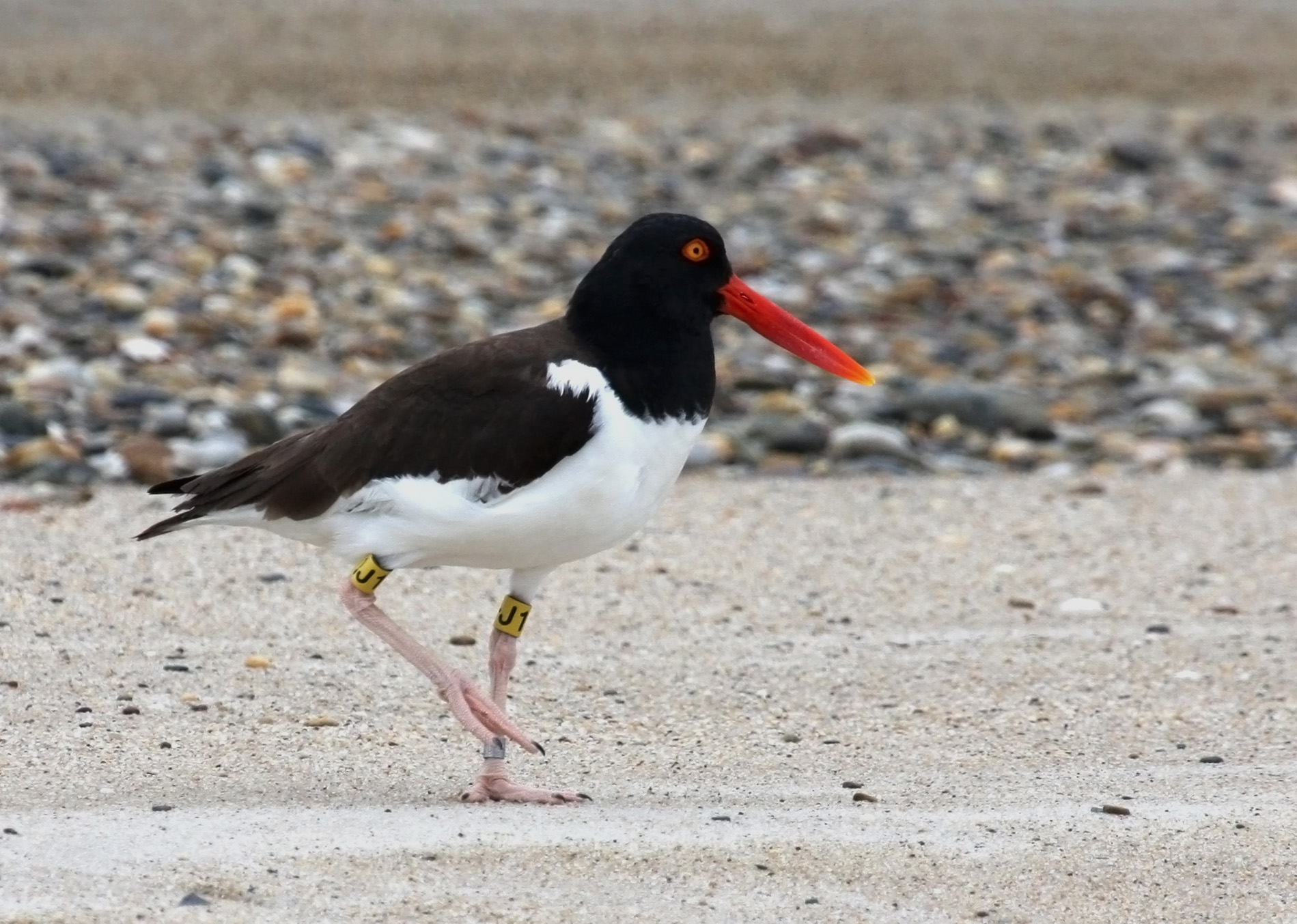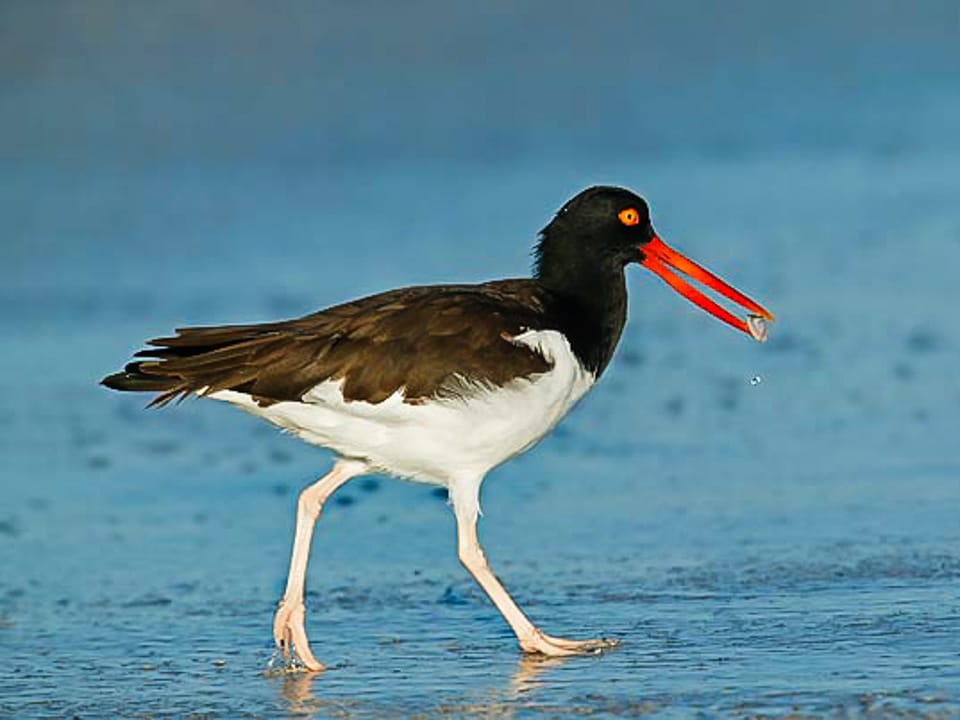On the southern coast of New England, one of the early indicators of spring is the raucous call of American Oystercatchers newly returned from coastal marshes in the Southeast. For much of the 20th century, these large, colorful shorebirds were absent from the Northeast and restricted to remote areas of the mid-Atlantic coast. Market hunting and egg collecting had decimated their population and Oystercatchers were slow to recover. By the 1970’s and ‘80s, they began to reappear, only to be met with rapid development of coastal areas and an increasing flood of humans competing for the same beaches the Oystercatchers need for nesting.
Over the course of this exceptionally cold and stormy winter, I spent many hours staring through binoculars out of the window of a little single-engine plane. My mission was to find and count every American Oystercatcher from New York to Texas. From 400 feet up these shorebirds look like pepper grains scattered on beaches, jetties, and docks. Added to the challenge of actually seeing and counting the birds, the surveys had to be perfectly timed to the high tide when the birds are roosting together, as well as planned around weather, pilot schedules, and sun angle, and coordinated with ground surveys to verify our accuracy.
This survey was a repeat of counts conducted first in 2003 and again in the winter of 2013. In 2003, with funding from the National Fish and Wildlife Foundation, Manomet organized a partnership to conduct a comprehensive aerial survey of Oystercatchers in the United States and found only about 11,000 birds. This is approximately the population of a small town spread out along the entire Atlantic and Gulf Coasts. After the 2003 survey, researchers found that Oystercatcher numbers were declining across their range. Nesting birds were not able to hatch and raise enough chicks because of pressure from predators, habitat loss, and disturbance from human activities. By 2008 we estimated that the population was declining by 1.5% per year and was down to about 10,250 birds.





 Back to all
Back to all


